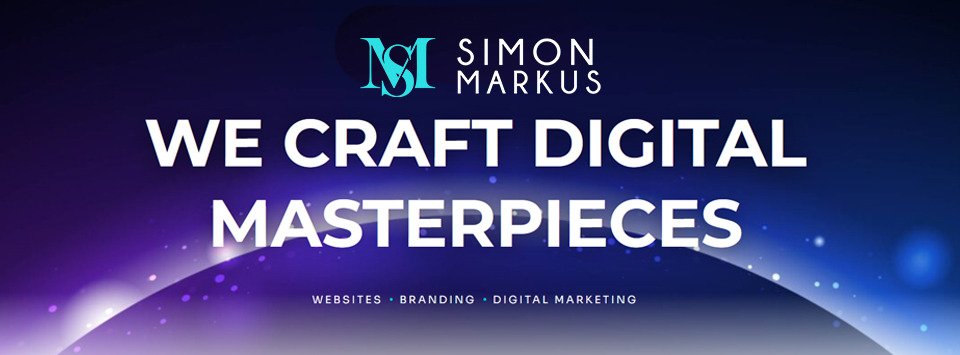What readers will learn:
- The definition and importance of Google penalties in SEO.
- The different types of Google penalties and how they are imposed.
- How to identify a Google penalty and common causes.
- Steps to recover from a Google penalty.
- Proven prevention techniques to avoid Google penalties.
In today’s digital age, search engine optimization (SEO) plays a crucial role in the success of any online business. When it comes to SEO, Google is undoubtedly the king of search engines. As the largest search engine in the world, Google sets the standards and guidelines that website owners and SEO professionals must follow to ensure their websites rank well in search results. However, failing to adhere to these guidelines can result in a Google penalty, which can have a devastating impact on a website’s visibility and organic traffic.
Definition of Google Penalty
A Google penalty is a negative action taken by Google against a website that violates its guidelines. It is a way for Google to maintain the quality of its search results and penalize websites that engage in manipulative or deceptive practices to gain an unfair advantage in search rankings. When a website is penalized by Google, its rankings drop significantly, leading to a decrease in organic traffic and, ultimately, a loss of potential customers and revenue.
Importance of Adhering to Google’s Guidelines in Avoiding Penalties
Adhering to Google’s guidelines is of utmost importance to avoid penalties and maintain a healthy online presence. Google’s algorithms are designed to reward websites that provide valuable and relevant content to users while penalizing those that engage in spammy or deceptive practices. By following Google’s guidelines, website owners can ensure that their websites are in good standing with the search engine and have a higher chance of ranking well in search results. It is essential for entrepreneurs and small to medium business owners to understand the significance of SEO and the consequences of not adhering to Google’s guidelines.
Types of Google Penalties
There are two main types of Google penalties: manual penalties and algorithmic penalties. Understanding these penalties is crucial for identifying and addressing any issues that may arise.
Manual Penalties
Manual penalties are imposed by Google’s web spam team, which manually reviews websites and identifies manipulative or deceptive practices that violate Google’s guidelines. When a manual penalty is imposed, a website’s rankings drop significantly, and it may even be removed from Google’s search results altogether.
1. Imposed by Google’s Web Spam Team
Google’s web spam team consists of experts who are responsible for manually reviewing websites and determining whether they are engaging in practices that violate Google’s guidelines. These experts use sophisticated tools and techniques to identify websites that are using manipulative or deceptive tactics to improve their search rankings.
2. Identifying Manipulative or Deceptive Practices
The web spam team looks for various signals that indicate manipulative or deceptive practices, such as keyword stuffing, hidden text, cloaking, and unnatural link building. If a website is found to be engaging in any of these practices, it is likely to receive a manual penalty from Google.
Algorithmic Penalties
Algorithmic penalties are automatic penalties applied by Google’s algorithms when they detect issues with a website’s SEO practices. These penalties are triggered by major algorithm updates, such as Panda, Penguin, and Hummingbird, which are designed to improve the quality of search results.
1. Impact of Major Algorithm Updates (Panda, Penguin, Hummingbird)
Google’s algorithm updates, such as Panda, Penguin, and Hummingbird, have had a significant impact on search engine rankings. These updates are aimed at penalizing websites that engage in practices like thin or duplicate content, unnatural link building, and keyword stuffing. Websites that fail to adapt to these algorithm changes may experience a drop in rankings and organic traffic.
Identifying a Google Penalty
Identifying a Google penalty is crucial for taking the necessary steps to recover from it. Here are some signs that indicate a website may have been penalized by Google.
Drop in Rankings and Organic Traffic
One of the most apparent signs of a Google penalty is a sudden and significant drop in search engine rankings. If a website was previously ranking well for its target keywords but has suddenly disappeared from the search results or dropped significantly in rankings, it may be a sign of a penalty.
Monitoring Website Performance and Rankings Regularly
Regularly monitoring website performance and rankings is essential for identifying any sudden changes that may indicate a Google penalty. Tools like Google Analytics and Google Search Console can provide valuable insights into a website’s performance and help identify any issues that may have caused a drop in rankings or organic traffic.
Manual Action Message in Google Search Console
If a website has been penalized by Google, the webmaster is likely to receive a manual action message in Google Search Console. This message will provide details about the penalty and the steps that need to be taken to resolve it. It is crucial to address the issues mentioned in the manual action message promptly to recover from the penalty.
Common Causes of Google Penalties
Understanding the common causes of Google penalties is essential for preventing them in the first place. By avoiding these practices, website owners can ensure that their websites are in compliance with Google’s guidelines and have a better chance of ranking well in search results.
Thin or Duplicate Content
One of the most common causes of Google penalties is thin or duplicate content. Thin content refers to content that provides little or no value to users and is often created solely for the purpose of ranking in search results. Duplicate content refers to content that is identical or very similar to content found on other websites. Google considers both thin and duplicate content as low-quality and penalizes websites that engage in these practices.
To avoid penalties related to thin or duplicate content, it is essential to create high-quality, original, and valuable content that provides unique insights or solutions to users’ queries. Avoid copying content from other websites or using automated content generation tools, as these practices can lead to penalties.
Unnatural Link Building
Another common cause of Google penalties is unnatural link building. In the past, many websites used manipulative tactics, such as buying links or participating in link schemes, to artificially inflate their search rankings. However, Google’s algorithms have become more sophisticated in detecting unnatural links, and websites that engage in these practices are likely to be penalized.
To prevent penalties related to unnatural link building, it is essential to focus on building high-quality and relevant backlinks. Instead of buying links or participating in link schemes, website owners should focus on creating valuable content that naturally attracts links from reputable websites. Building relationships with influencers and industry experts can also help in acquiring high-quality backlinks.
Keyword Stuffing and Over-Optimization
Keyword stuffing and over-optimization are practices that involve excessively using target keywords in a website’s content or meta tags to manipulate search rankings. These practices go against Google’s guidelines and can lead to penalties.
To avoid penalties related to keyword stuffing and over-optimization, it is crucial to use keywords naturally and in a way that enhances the user experience. Instead of focusing on keyword density, website owners should focus on creating valuable and relevant content that addresses users’ queries. Using synonyms and related terms can also help in diversifying the keyword usage and avoiding over-optimization.
Recovering from a Google Penalty
Recovering from a Google penalty requires identifying and fixing the issues that led to the penalty and taking the necessary steps to resolve them. Here are some steps to take when recovering from a Google penalty.
Identify and Fix the Issue
The first step in recovering from a Google penalty is identifying the issue that led to the penalty. This can be done by conducting a comprehensive website audit, which involves analyzing the website’s content, backlink profile, and technical aspects. Once the issue has been identified, it is essential to take the necessary steps to fix it.
Conduct a Comprehensive Website Audit
A comprehensive website audit involves analyzing various aspects of a website, including its content, backlink profile, technical SEO, and user experience. By conducting a thorough audit, website owners can identify any issues that may have caused the penalty and take the necessary steps to fix them.
Submit a Reconsideration Request
After fixing the issues that led to the penalty, website owners can submit a reconsideration request to Google. This request should clearly explain the steps that have been taken to address the issues and provide evidence of the changes made. It is crucial to be transparent and honest in the reconsideration request to increase the chances of a successful recovery.
Case Study: Recovering from a Google Penalty
My name is Sarah, and I run an e-commerce website that sells handmade jewelry. A few months ago, I noticed a significant drop in my website’s rankings and organic traffic. It was a devastating blow to my business, and I knew I had to take immediate action to recover from this Google penalty.
I started by monitoring my website’s performance and rankings regularly. I noticed that my website had received a Manual Action Message in Google Search Console, stating that my site had violated Google’s guidelines for thin content.
Panicking, I decided to conduct a comprehensive website audit to identify and fix the issue. I realized that I had mistakenly used duplicate product descriptions on some of my pages, which led to thin content. I immediately went through each page, rewriting unique and valuable descriptions for every product.
Once I had fixed the issue, I submitted a Reconsideration Request to Google, explaining the steps I had taken to rectify the problem. It was a nerve-wracking wait, but after a few weeks, I received a message from Google stating that the manual penalty had been lifted.
This experience taught me the importance of staying updated with Google’s guidelines and the need for a high-quality user experience. I now regularly review my website’s content to ensure it is unique, informative, and valuable to my visitors. I also focus on building high-quality and relevant backlinks, avoiding any black hat SEO techniques that could potentially harm my website’s rankings.
Recovering from a Google penalty was a challenging process, but it made me realize the significance of taking proactive measures to prevent such penalties in the first place. I now prioritize adhering to Google’s guidelines, regularly monitoring my website’s performance, and staying ahead of any potential issues that could lead to penalties.
Preventing Google Penalties
Prevention is always better than cure when it comes to Google penalties. By taking proactive measures to prevent penalties, website owners can maintain a healthy online presence and avoid the negative consequences of penalties. Here are some techniques to prevent Google penalties.
Stay Updated with Google’s Guidelines
Google’s guidelines and algorithms are constantly evolving, and it is crucial to stay updated with the latest changes. By regularly monitoring Google’s announcements and updates, website owners can ensure that their websites are in compliance with the latest guidelines and algorithms.
Importance of User Experience and Quality
User experience and
Frequently Asked Questions
What is a Google penalty?
A Google penalty is a punishment given by Google to websites that violate its guidelines.
Who can get a Google penalty?
Any website that engages in spammy or unethical SEO practices can get a Google penalty.
How can I avoid a Google penalty?
By following Google’s guidelines, focusing on high-quality content, and using ethical SEO techniques.
What happens if I get a Google penalty?
Your website’s rankings and visibility in search results can significantly drop.
How long does a Google penalty last?
The duration of a Google penalty can vary, but it can last from a few weeks to several months.
Isn’t it impossible to recover from a Google penalty?
While recovering from a Google penalty can be challenging, it is possible with the right strategies and efforts.
John Smith is a seasoned SEO expert with over 10 years of experience in the field. He has a deep understanding of search engine algorithms and has helped numerous businesses improve their online visibility and organic traffic through effective SEO strategies.
Throughout his career, John has closely followed Google’s guidelines and best practices, ensuring that his clients’ websites adhere to them to avoid any potential penalties. He has successfully navigated major algorithm updates such as Panda, Penguin, and Hummingbird, helping his clients maintain their rankings and recover from any negative impacts.
John’s expertise lies in identifying and resolving issues that could potentially lead to Google penalties. He emphasizes the importance of high-quality content, avoiding manipulative or deceptive practices, and natural link building strategies to maintain a strong online presence.
With his comprehensive knowledge of Google penalties and recovery techniques, John has become a trusted authority in the SEO industry. He regularly updates his knowledge to stay ahead of the ever-changing search engine landscape and shares his insights through articles, workshops, and speaking engagements.



